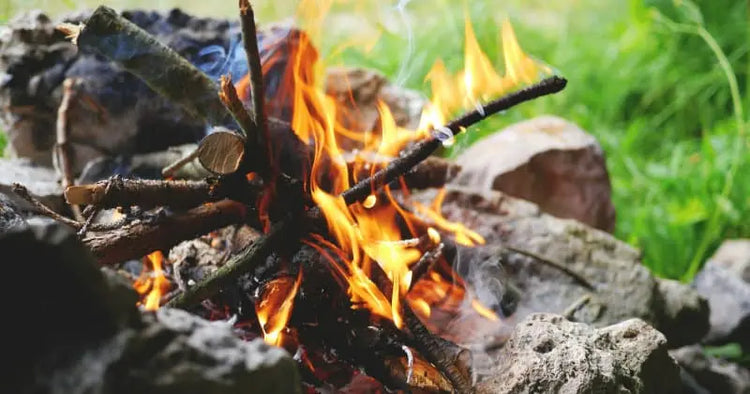Making a campfire in the woods is not only a fun part of camping, but also a crucial survival skill for various situations. Whether you need to signal for help, dry wet clothing, or purify water, knowing how to make a fire is essential. Here’s what you need to know to build a campfire in the woods, even in windy or wet conditions.

1. Start with Your Fire Pit or Circle
Containing your fire is crucial. This typically involves digging a fire pit or creating a circle with rocks. It's important to always contain your fire, regardless of your confidence in preventing forest fires. Additionally, the fire pit or rock circle can serve as a resting point for your fire-building materials.
2. Understand Tinder vs. Kindling vs. Fuel Wood
It's essential to differentiate between tinder, kindling, and fuelwood. Tinder consists of very dry, small pieces of wood or other easily ignitable materials, such as dry moss or bark. Kindling refers to small sticks and twigs used to ignite the tinder. Fuelwood, contrary to popular belief, doesn't require large logs; sticks and branches about the circumference of your arm are ideal for most campfires.

3. Gathering Firewood
When gathering firewood, avoid using an ax to cut down trees, as this can harm living trees and disrupt the natural environment. Instead, search for fallen branches and dead, dry wood. Ensure you collect an ample amount of kindling, as a campfire can burn through wood quickly.
4. Breaking Wood
Breaking long branches into smaller pieces can be done using various methods, such as the under-foot break, over-knee break, or utilizing the heat from the fire to weaken and break the wood.

5. Choose the Right Fire Lay
There are different ways to lay a fire, each suited for specific conditions. For instance, the teepee lay is well-known, but other lays, such as the A-frame or lean-to fire lay, are more suitable for rainy conditions. Understanding the various fire lays can significantly impact the success of your campfire in different environments.
By mastering these techniques, you can enhance your outdoor experience and ensure you have the necessary skills to build a campfire in the wilderness under varying conditions.

